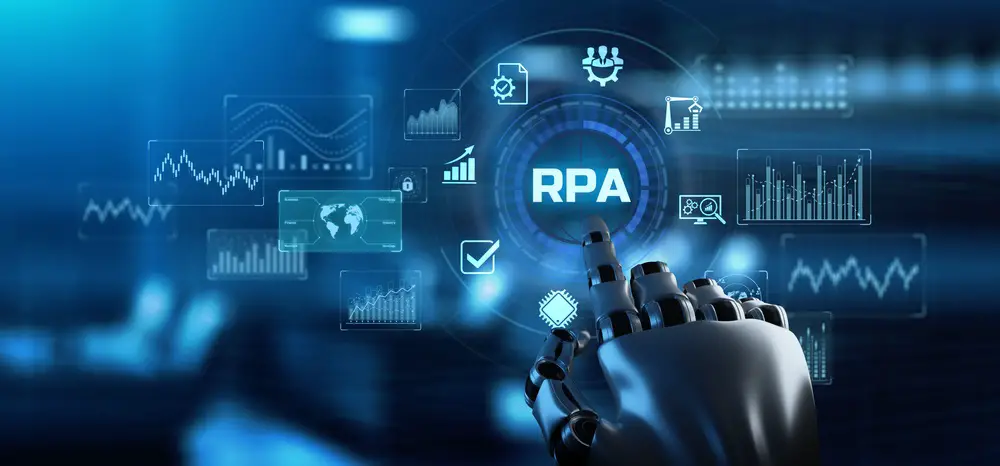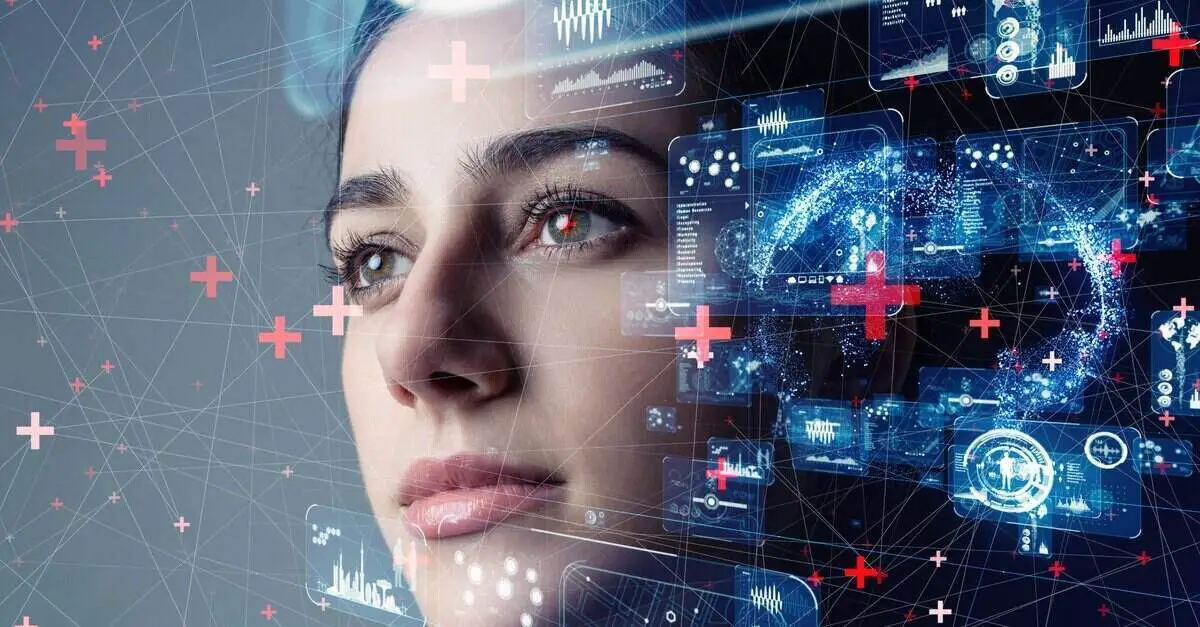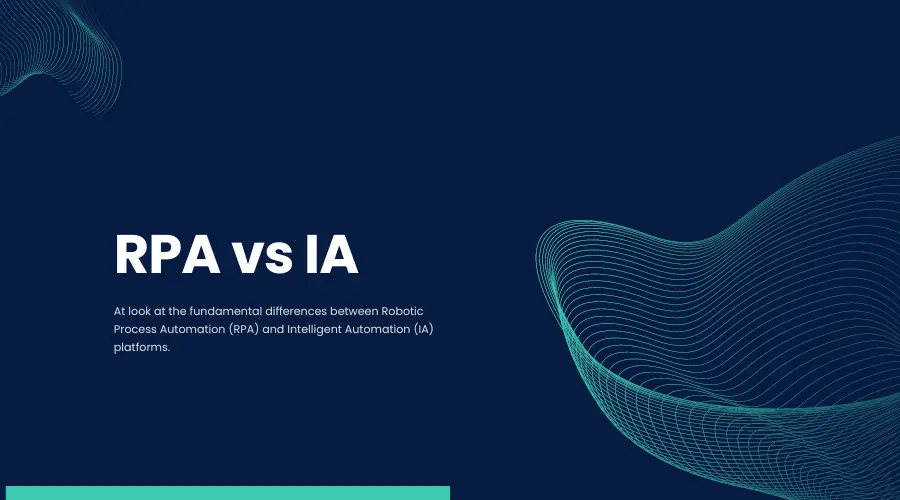Most organizations want to achieve the fundamental goals of increasing customer satisfaction, improving employee morale, and reducing operational costs. While there are many ways to do this, a few are quite as cost-effective as using Robotic Process Automation (RPA) and artificial intelligence (AI).
So, what is RPA and what is AI? Is there an ongoing RPA vs. AI tug of war? If so, who’s winning and why?
The truth is that RPA and AI are technological nuances designed to help automate businesses and improve efficiency and productivity. Are they the same thing? No, not necessarily. However, they can work well together to augment operational efficiency in the right hands.
Let’s take a quick look at RPA and AI and see if there’s an RPA vs AI war going on.
Table of Contents
- What Is AI?
- How Is AI Used in the Real World?
- What Is the Benefit of AI?
- What Is RPA?
- How Is RPA Used in the Real World?
- What Are the Benefits of RPA?
- Should You Use AI or RPA for Business Automation?
What Is AI?
Artificial intelligence, or AI, simulates human intelligence by a machine or computer. This is a computer’s ability to process information, think, and come up with orders to execute just like a human being would.
Artificial intelligence involves a number of processes, including:
- Machine learning (the computer acquires information and contextualizes rules within which it can use the acquired information)
- Reason (the computer can use context and set rules to reach a logical conclusion)
- Self-correction (the computer learns from its successes and failures)
AI derives cognitive decisions depending on the data it receives. In short, this is a data-driven, outcome-focused technology designed to mimic human intelligence at its best.
Some of the most common AI applications in the world today include:
- Speech recognition
- Facial recognition
- Image recognition
- Data analysis
- Chatbots
- Customer sentiment analysis
- Natural language processing
According to the designated patterns, AI algorithms can sort through big data, whether unstructured or structured data.
Due to their intellectual capabilities, AI robots can effectively enhance business process automation and complete complicated tasks faster than humans can. This is also free of human error.
How Is AI Used in the Real World?

AI technology is used in a multitude of business process automation today. In fact, AI is employed in tools that we use on a day-to-day basis, such as Alexa, Siri, and Amazon Echo.
Another excellent example is the use of AI as chatbots on business websites. This not only goes towards engaging the customer as soon as they log onto a web page, but it also goes a long way towards improving the customer experience.
There are other uses for AI in the real world. For instance, finance departments can perform advanced analytics using AI. This could allow them to carry out tasks such as accurately completing tax forecasting.
Business owners can also manage product inventory, optimize products, plan logistics, and more using AI technology.
What Is the Benefit of AI?
Artificial intelligence, despite being still quite new, has enormous benefits and uses in almost every industry today. Here are some of the most notable benefits of AI.
Limit or Eliminate Human Error
Unlike humans, when programmed properly, computers don’t make mistakes. AI employs deep learning and data science to develop the best possible solution to any given problem. If these bots have access to all the necessary data, the AI algorithm will find the most effective and error-free path to execute a task.
Faster Decision-Making
AIs are programmed to analyze available data and recommend a course of action at breakneck speed. Unlike humans, AIs don’t have any destruction that could delay this process.
New Inventions
AI can process big data at a scale that is impossible for human beings. With this much information, AIs can find and invent new solutions that a human being would have otherwise missed.
Finally, AIs are faster, always available, and more reliable than humans.
What Is RPA?
RPA stands for “robotic process automation.” This software is designed to mimic human action and complete repetitive tasks. RPA bots are generally used in the completion of menial, structured tasks. This allows businesses to both streamline and expedite their processes.
As long as you have structured data as input, RPA technology can be used to complete tasks faster and in the same manner every single time. As with AI, RPA bots complete tasks without human error.
RPA robots are now fondly referred to as “digital workers.” This is mostly because, with the right RPA bots, you can rest assured that the assigned tasks will be completed as expected.
These bots take care of time-consuming, repetitive tasks that would otherwise require massive manpower and man-hours to complete. That freed-up time can be used for higher-priority tasks.
How Is RPA Used in the Real World?
RPA has a great number of uses in the real world. This is mostly because every industry has at least one or two repetitive yet necessary tasks that need to be completed for the business to remain functional. However, some of the industries that benefit the most from RPA include:
- Financial services
- Insurance companies
- Telecommunication companies
- Medical services
Robotic process automation is all about the standardization and automation of repeatable business processes such as invoicing, data collection, etc. Unlike AI, RPA robots don’t learn, improvise, or become better independently. Instead, they complete the same tasks repeatedly at a much faster and more accurate rate than human beings.
What Are the Benefits of RPA?

Every business has repetitive tasks that consume too much time, energy, and manpower. RPA technology and RPA tools are designed to take these tasks off your plate and make your business more efficient. Here are some benefits that come with RPA implementation.
Speed
While RPA technology is technically deployed to mimic human behavior and complete repetitive tasks, these bots can get the job done much faster than any human can. Typically, RPA bots can get the job done 4 or even 5 times faster.
Accuracy
Deploying RPA bots allows organizations to complete repetitive tasks while minimizing or even eliminating human error.
Reliability
Unlike human beings who need time off, vacation days, and visits to the doctor, RPA bots are always available to do the job 24/7. This can help minimize delays and increase productivity.
Finally, the use of RPA bots can help improve employee morale. These bots free up time for employees to engage in more creative and high-value jobs instead of spending time doing mind-numbing repetitive jobs.
Should You Use AI or RPA for Business Automation?
It’s important to realize that, while AI and RPA might differ, they are part of the same intelligent automation continuum. Ideally, you should strive to use both in your intelligent process automation efforts.
One of the best courses of action is to start by employing RPA on processes that you can quickly build a mental map around and then bring in AI once you start tackling complex issues. This eases you into your automation journey by giving you early wins, but it also allows you to build a suitable foundation upon which you can scale up using AI.
There are, however, some processes that call for AI as opposed to RPA. These include:
- High variable processes that don’t typically depend on clear rules
- Processes that use unstructured data, such as data extraction, invoice extraction, speech to text, and email routing
- Processes where the outcome can’t be easily predicted, such as property valuation, inventory forecasts, and loan defaults
Research shows that both RPA and AI are on a massive growth path. In fact, by 2027, the RPA market is projected to cross the $25.5 mark, while the AI market is expected to be worth more than an impressive $390.9 billion by 2025.
Together, RPA and AI have already revolutionized business process automation. One can only imagine how much more of an impact these two technological nuances will have on the world in general. Both RPA and AI can help any organization better meet the needs of an ever more demanding clientele.
Whether it’s in coming up with new products, finding new ways to automate product delivery or using chatbots to better communicate with your clients, RPA and AI can make it happen.



